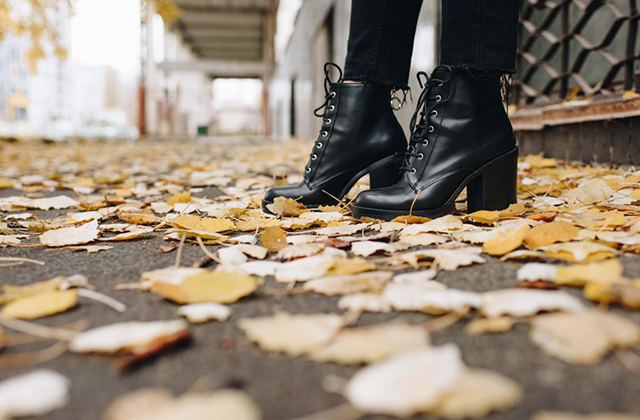When shopping for the best price UGG boots online with a pair of hiking boots, it is important to know how they are made. No, you don’t need to know how to make your own, but you have to understand what goes into them and how it affects the comfort and durability – the overall quality – of the hiking boots. In this article I will describe the parts of a hiking boot, what they are made of, and how they come together to form the ideal hiking boot for you.
Like
any shoe, a hiking boot consists of an upper and a sole joined together
by a welt and with an inlet at the front covered by a tongue, and the
whole is lined with various pads and cushions. I will discuss each of
those parts in detail, in terms of what they are made of and what to
look for in various types of hiking boots.
Sole and Welt
Let’s start at the bottom. The soul of the hiking boot is the sole.
Soles
are usually made of synthetic rubber in varying degrees of hardness. A
harder sole will last longer, but generally will have poorer traction on
hard surfaces (such as bare rock) and will provide less cushioning. A
softer sole gives you the cushioning you need for long hikes and the
traction you need on rough ground, but it will wear out faster.
Manufacturers
have made their trade-offs in choosing the materials to make their
boots out of. The final choice is up to you when you choose which boot
to buy. If you expect to do most of your hiking on soft surfaces, such
as desert sand or bare soil, you might lean more toward harder soles.
But most of us hike on fairly rugged trails with a good deal of bare
rock, and we need the traction of a softer sole.
Inside the sole
is a shank. It is a stiffening structure, either fiberglass or steel,
that prevents the sole of the boot from twisting and that provides arch
support. Shanks may be only three-quarter or half-length. Hiking shoes
generally have no shank at all, deriving all their stiffness from the
molded rubber sole. Good day-hiking boots may have a full-length
fiberglass shank. High-quality backpacking boots will give you the
choice of fiberglass or steel. It will depend on how strong you need
your hiking boots to be, and how heavy.
Look for deep, knobby
tread. Deep cuts in the sole allow water and mud to flow out so you can
get traction. “Fake” hiking boots, designed to look like hiking boots
but not to perform like them, may have thinner soles and shallow tread.
Working boots also may have shallow tread, and they generally have
harder soles than hiking boots have.
The welt is the connection
between the sole and the upper. Virtually all hiking boots these days
are glued together rather than sewn. If you are buying a very expensive
pair of backpacking boots, give preference to a sewn welt. Boots with a
sewn welt will be easier to resole when the original sole wears out. For
hiking shoes or day-hiking boots, when the sole wears out, the upper is
not worth salvaging, either, so a glued welt is just fine.
Upper
The
upper of the hiking boot provides warmth, protects the sides of your
feet from rocks and brush, and repels water. It must also allow your
feet to “breathe,” so that moisture from perspiration will not build up
inside the boots and cause blisters.
Uppers of hiking boots are
usually at least partially made of leather. High-quality backpacking
boots are often made of full-grain leather (leather that has not been
split). Lighter boots may be made of split-grain leather (leather that
has been split or sueded on one side), or a combination of split-grain
leather with various fabrics.
Fabrics that are combined with
leather are usually some type of nylon. Heavy nylon wears nearly as well
as leather, and it is much lighter and cheaper than leather.
In
any hiking boot, especially those made of combinations of leather and
fabric, there will be seams. Seams are bad. Seams are points of failure.
Seams are points of wear, as one panel of the boot rubs against
another. Seams are penetrations that are difficult to waterproof.
The
uppers of backpacking boots are sometimes made of a single piece of
full-grain leather with only one seam at the back. This is good, for all
the reasons that seams are bad, but it is expensive.
You’re going
to have to deal with seams. But as you shop for hiking boots, look for
customer reviews that mention failure or undue wearing of the seams, and
avoid those brands.
Inlet and Tongue
There are two things to look for in the inlet and the tongue:
1. How the laces are attached and adjusted
2. How the tongue is attached to the sides of the inlet
The
inlet may be provided with eyelets, D-rings, hooks, and webbing, alone
or in combination. They each have these advantages and disadvantages:
* Eyelets: Simplest and most durable way to lace a boot. Not so easily adjusted.
*
D-rings: Easier to adjust than eyelets, more durable than hooks. More
failure-prone than eyelets. (They can break, and they can tear out of
the leather.)
* Hooks: Easiest to adjust of all lace attachments.
Subject to getting hooked on brush, or bent or broken in impacts with
boulders, main cause of breakage of laces.
* Webbing: Cause less
chafing of laces, slightly easier to adjust than eyelets, slightly more
durable than D-rings. More failure-prone than eyelets.
The most
common lace attachment of any hiking boot is eyelets below ankle-level
and hooks above. You may see eyelets all the way up, as in classic
military-style combat boots, or a combination of either D-rings or
webbing with hooks.
The attachment of the tongue is a critical
factor in how waterproof the hiking boots are. Provided the leather
and/or fabric and seams of the upper are waterproof, water will not get
into the boots until it gets higher than the attachment point of the
tongue.
Most hiking shoes and day-hiking boots have the tongue
attached all the way to the top. If the tongue is not fully attached,
consider carefully whether you will need that extra inch or two of
waterproofing.
High-rise backpacking boots have the tongue
attached only partway up, but that still reaches higher than most
day-hiking boots. It’s difficult to get the boot on and off if the
tongue is attached very high.
Linings and Pads
There are many pieces that go into the lining and padding of a hiking boot, but two in particular you need to pay attention to:
1. The sole lining
2. The scree collar
The
sole lining must be appropriately cushioned. You want a firm, durable
surface in immediate contact with your socks, but enough cushioning
below that to absorb impact.
The scree collar is a cushion around
the top of most hiking boots. It enables you to pull the boots tight
enough to keep out loose rocks (“scree”) but without chafing against
your ankle and Achilles tendon. This is the thickest and softest cushion
in the whole hiking boot. It must be soft enough to conform to your
ankle and Achilles tendon as they move, and still keep close enough
contact with your leg to keep the rocks out.
Very high hiking
boots, such as military-style combat boots, may have no scree collar at
all. The height of the boot is what keeps the rocks out.
Throughout,
the lining and padding of the hiking boots must be thick enough to
provide warmth, durable enough to last, and smooth enough that it will
not cause chafing and blisters.
Conclusion
So, these are the things you need to pay attention to when choosing a pair of hiking boots. Be prepared to compromise, and pay attention to which features are really important to the style of hiking you intend to do.
Chuck Bonner is a lifelong hiker and amateur naturalist, and webmaster of http://www.HikingWithChuck.com. For more information about hiking boots and other hiking equipment based on many years on the trail, visit.
Article Source: https://EzineArticles.com/expert/Chuck_Bonner/184207
Article Source: http://EzineArticles.com/1197896



